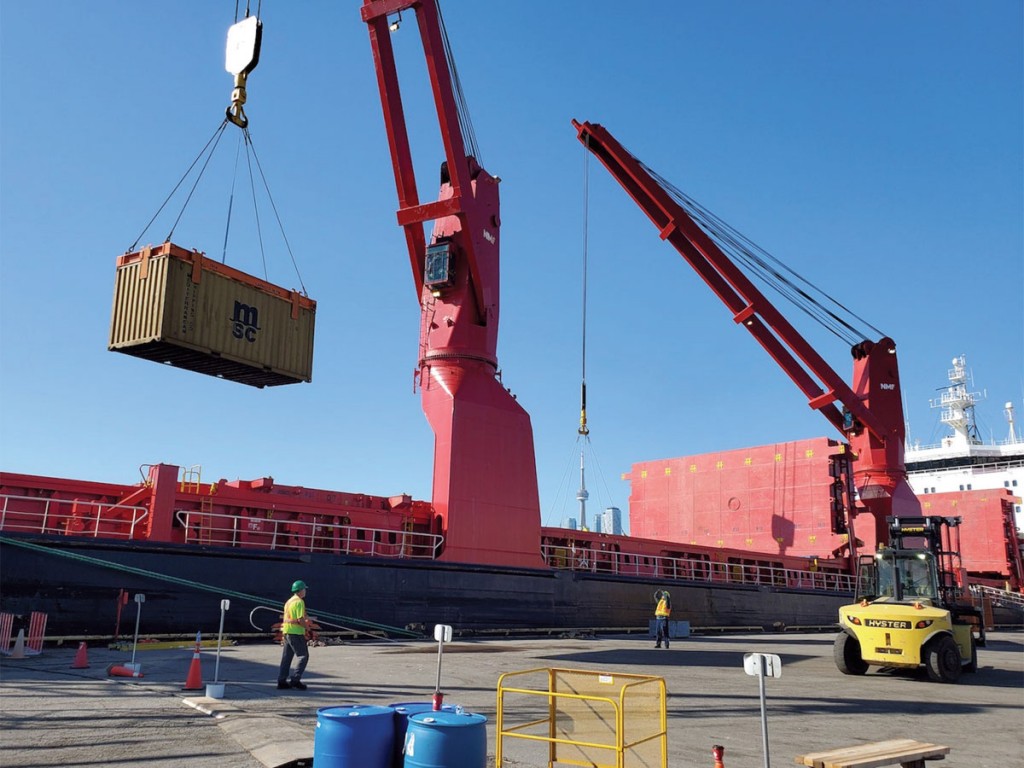Desgagnés Group carries out container shipment to Great Lakes
Four decades ago, in 1981, Manchester Liners abandoned a 500-TEU feeder service it had operated for a decade between Montreal and the Great Lakes via the St. Lawrence Seaway. For many years, fully cellular ships were then absent on the North American waterway. A project was considered in 2009, but dropped in favor of transit by truck and rail. In 2014, the Dutch Spliethoff Group was the first carrier to launch a liner service with multi-purpose vessels linking Antwerp to Cleveland. Earlier this fall, however, Quebec-based Groupe Desgagnés created a buzz by transporting nearly 400 containers from Montreal to the Port of Toronto to facilitate deliveries to receivers of congestion-delayed cargo in Canada’s largest market.

But there will be no follow-up this year to the first dedicated container shipment via the St. Lawrence Seaway in four decades to a Great Lakes port, Alexandre Beauchamp-Parent, President of Navigation Desgagnés, indicated in an interview.
“Other voyages were planned after the one on October 20 from Montreal to the Port of Toronto,” Beauchamp-Parent said. “We had a window. But congestion and other issues arose in Toronto and prevented us from continuing before the closing of the Seaway season. Things are all in the timing.”
Continued Beauchamp-Parent: “We feel that with some improvements, the model can be economically feasible. One thing is certain, we have been very grateful to have partnered with MSC in such a shortsea option that has long been sought by various stakeholders in the Great Lakes.
“It was a very positive experience for us, the Port of Montreal and MSC. We want to look at ways of making such voyages more predictable in the future.”
According to Beauchamp-Parent, the geared general cargo vessels typically used by Desgagnés during its summer Arctic sealifts represent an excellent fit for shortsea ventures of this kind. “We are always looking for creative solution opportunities and alterative options to transportation problems.”




